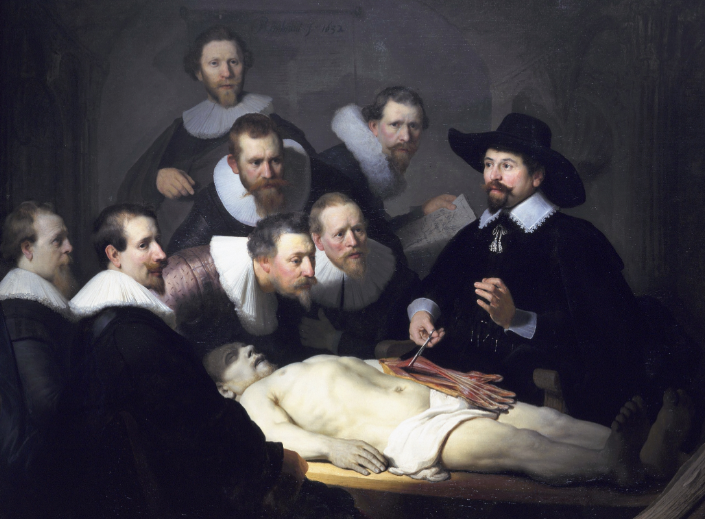 At the movies these days, we often have to wear special glasses to experience the 3D effect of the action, without which we are robbed of the ‘full picture’.
At the movies these days, we often have to wear special glasses to experience the 3D effect of the action, without which we are robbed of the ‘full picture’.
Today’s biblically-illiterate generation of Europeans are similarly robbed of the ‘full picture’ by having grown up learning to look at the world through secular lenses. Such lenses blind us to the sacred, the spiritual, the supernatural dimensions of life.
This weekend, I walked through the inner city of Amsterdam with several others, consciously observing the sights through the spectacles of paradox to help us see the familiar in fresh perspective.
For Amsterdam is a city of paradox, of surprises, contrasts and contradictions, where the sacred and the profane are interwoven.
There’s the paradox of the Golden Age of the seventeenth century, when Amsterdam was the hub of a global trading empire, raking in embarrassing riches from east and west, north and south, a glorious era the Dutch recall with pride. Yet the shadow side of this period was the shameful abuse of the slave trade conducted between West Africa and the West Indies with ships that sailed from Amsterdam. Many of the proud mansions lining the ring canals recently recognised as a World Heritage Site were financed from this callous trade in human cargo.
Marketplace
And there’s the paradox of the Red Light District, ostensibly a statement of enlightened freedom and tolerance, but in reality a shameful marketplace of enslaved humans. The Amsterdam police estimate that four out of every five women working behind the windows do so against their free will.
The contrast between the sacred and the profane is to be seen everywhere, for those with eyes to see. The text on a sculpture of a woman placed behind the Old Church, Amsterdam’s oldest church and oldest building, in the centre of the RLD, calls for ‘respect for the sex workers’ whose red-lit windows encircle much of the church.
A further paradox can be observed from one of the canal bridges. Looking for signs of Christianity in the midst of the RLD, one sees several church towers rising above the houses. Behind one unexceptional facade is the Onze-Lieve-Heer-Op-Zolder (Our Dear Lord in the Attic) clandestine baroque Catholic chapel, a reminder of the times when only Reformed Churches were tolerated to be seen. Other ministries, including YWAM and the Salvation Army, can be picked out and there are a number more just out of sight. Possibly there are more churches and ministries within the RLD than any other square kilometre in the country!
Mention the Salvation Army and the RLD to any Dutch person and they will think of Major Bosshardt, Holland’s closest equivalent to Mother Theresa. The RLD was the parish of this national icon. A familiar figure to all, passing out the War Cry, visiting the women and showing them love in many practical ways, her funeral was shown live on national TV a few years ago. A bridge next to the erotic museum is named after her today.
What a paradox! A spinster all her life, dressed from head to toe in an old-fashioned uniform, she won national respect by incarnating the love of Jesus to prostitutes. Her motto is engraved on a bronze bench alongside a life-size sculpture of her in the RLD: To serve God is to serve people; to serve people is to serve God.
Dissection
Amsterdam’s most famous artist, Rembrandt, left many visual testimonies to profound paradoxes in his work. The Anatomy Lesson of Dr Tulp, for example, a scene depicting an annual event in the Weigh House at Nieuw Markt of public dissections by famous surgeons. While usually interpreted as a scientific and rationalistic work, this painting has been shown to concern the nature of man and his relationship to God. The classical Greek phrase, Know thyself, was invoked as justification for the study of anatomy, and was often inscribed on illustrations of dissections. The surgeon in this painting, Dr Tulp, taught in his public anatonomies that dissections revealed the wisdom of God: ‘even in the smallest (detail), God lies hid’. Even in a criminal’s corpse!
Outside the mayor’s office stands a large bronze statue of the seventeenth-century Jewish philosopher, Baruch Spinoza, seen as a great figure of western atheism. Yet last Friday’s NRC Handelsblad ran a review of a new book, Spinoza: a paradoxical Dutch icon, which depicts him as anything but a pioneer of modern liberalism; he was even once described as ‘drunk with God’.
Behind these paradoxes of Amsterdam (and there’s much more: van Gogh, Descartes, secularisation, tolerance, architecture…) lies the deeper paradox of humanity, that contradictory mixture of glory and shame, dignity and depravity in us all, which only biblical realism explains.
This weekend we remember the deepest paradox of all: the God-man, whose death resolves the human paradox. The Son of God became the Son of Man so sons of men could become sons of God.
Till next week,
Jeff Fountain
Till next week,

nice little epistle.
[…] A large copy of the painting The Anatomy Lesson of Dr Nicolaes Tulp hangs in that theatre today, showing seven members of the surgeon’s guild crowded around a corpse […]
[…] Een groot kopie van het schilderij De anatomische les van Dr. Nicolaes Tulp hangt nu in dat theater, die laat zien hoe zeven leden van het chirurgengilde om een lijk van een […]
[…] copie de la peinture La leçon d’anatomie du docteur Tulp est accrochée dans ce théâtre aujourd’hui, montrant sept membres de la guilde des chirurgiens […]